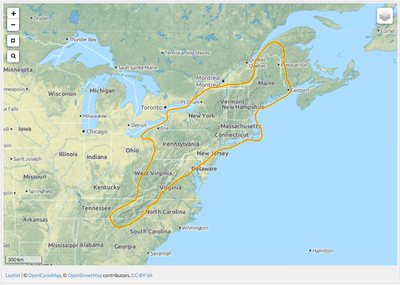Riparian Restoration Decision Support Tool
 The tool works by identifying vulnerable stream and riverbanks that lack tree cover and shade in coldwater stream habitats. By locating the best spots to plant trees in riparian zones, resource managers can provide shade that limits the amount of solar radiation heating the water and reduces the impacts from climate change. This well-established management strategy will benefit high-elevation, cold-water aquatic communities.
The tool works by identifying vulnerable stream and riverbanks that lack tree cover and shade in coldwater stream habitats. By locating the best spots to plant trees in riparian zones, resource managers can provide shade that limits the amount of solar radiation heating the water and reduces the impacts from climate change. This well-established management strategy will benefit high-elevation, cold-water aquatic communities.
For instructions on how to use the tool, a webinar presentation provides a detailed overview of how to use the tool. Jessica Rhodes explains how managers and researchers can tailor the decision support tool to their own specific needs and priority areas and resources. A web viewer built in combination with the tool also allows users to visualize GIS data layers pertinent to elevation and land cover of the landscape, locations of dams and gas wells, and data pertaining to the presence of cold-water dependent species such as Eastern Brook Trout.
Both the research and tools from this project are being linked directly with ongoing and future stream flow, temperature, and biological response monitoring and modeling efforts within the DOI Northeast and Southeast Climate Science Center.


























